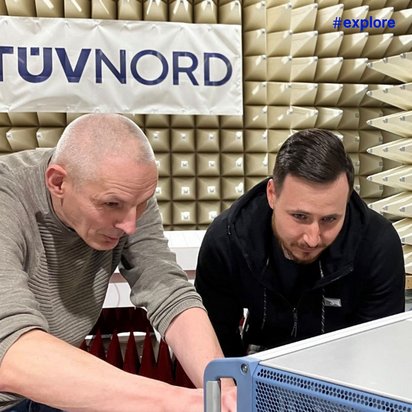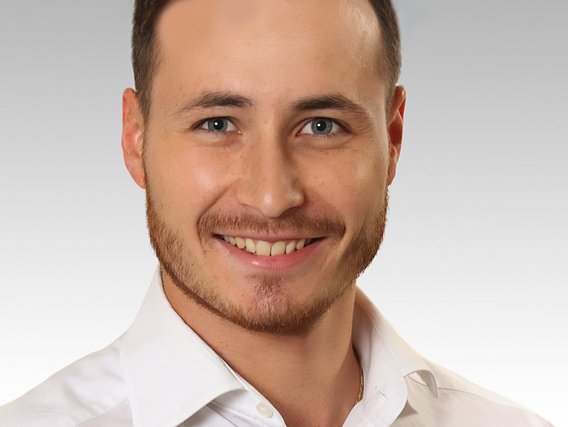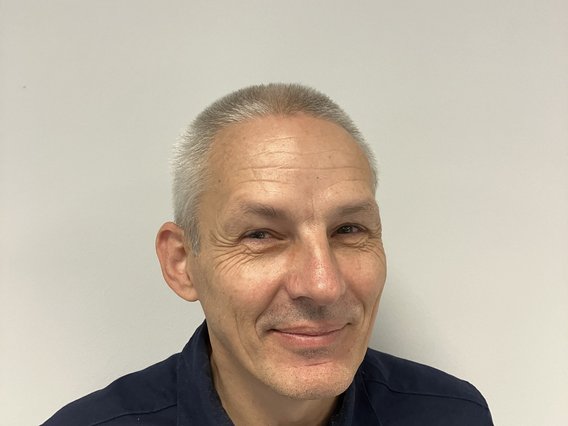Interview
Life Simplifiers in the Testing Laboratory
In Cologne-Dellbrück, there are no off-the-shelf tests.

Interview
In Cologne-Dellbrück, there are no off-the-shelf tests.

14 November 2024
What do a car's key fob, a photo printer in a drugstore, and a washing machine have in common? They could all be familiar with the lab of TÜV NORD High Frequency Technology in Cologne-Dellbrück. Here, Ralf Trepper, Denis Raschka, and their team test, among other things, for immunity to interference, electromagnetic compatibility, or cybersecurity.
In the high-frequency technology lab, you test washing machines, among other things. Why?
Denis Raschka: Every device, every car, and every machine communicates with its environment via radio today. In short, it must be ensured that the device does not interfere with other applications and cannot be disturbed by other applications. More and more manufacturers want to integrate wireless applications into their devices. Washing machines have been around for more than a hundred years. But today, these devices are supposed to be connected via Bluetooth to an app. This way, the washing machine can notify you when the washing cycle is complete. The goal is to make life easier.

Where else can we find such life-simplifiers?
Denis Raschka: Denis Raschka: They are practically around every corner. Starting with wireless photo printers in drugstores, which enable wireless photo transfer and direct printing of photos. At home: smart home applications, consumer electronics. Life-simplifiers also include keyless entry systems for cars, garage door openers, or proximity sensors in cars. We recently tested a really cool system: a set of virtual reality headsets for a classroom. The children put them on, and the teacher can, for example, take them on a virtual tour of Ancient Rome. That was a very interesting project.
These are all very different products. Do they all fall under the same regulations?
Ralf Trepper: In the past, there were actually type tests for individual products, but the big change came in 1995. At that time, we were one of the first laboratories to get accredited. Then came the shift to regulate market access on a European level. If you can prove CE conformity here, you can market the device throughout Europe—according to the same regulations and device-specific standards. We test devices before they enter the market. The Radio Equipment Directive (RED) regulates, among other things, requirements for frequency use, device safety, and electromagnetic compatibility of devices. So, there isn’t just one regulation; there are several. However, they affect all products that contain wireless technology in any form. The manufacturer can use the test reports to create a declaration of conformity and mark the device with a CE label.
Back to the different applications: Are there many laboratories that specialize in certain applications?
Ralf Trepper: In fact, there are several laboratories that offer RF testing. However, there are specialized applications that not many can test. For example, lane departure assist systems: the latest generation operates in the 76-gigahertz range. There are not many laboratories in Europe that can measure such high frequencies. The measurement technology has become very complex and demanding.

That sounds like a frequency shift...
Ralf Trepper: The first radar systems used for lane departure assist systems were still very inaccurate. The old systems operated in the 24-gigahertz range. However, the resolution wasn't very good due to the width of the signal. Obstacles were detected, but their size wasn't identified. The automotive industry was therefore interested in greater accuracy, which required a broader signal bandwidth. Meanwhile, the International Telecommunication Union (ITU), a UN agency, had already planned to move the frequency range for such applications to 76 gigahertz. There were still unused resources available that could be utilized. The advantage of today's radar sensors is that they have much higher resolution, thanks to better technology and the larger bandwidth they are allowed to use.
How do you respond to changing requirements?
Denis Raschka: We constantly invest in new testing equipment, which is becoming increasingly complex. Just recently, we put a new test chamber into operation, one large enough to accommodate a smart device. The size was important because we not only test individual components but also test them in their assembled state. We're also continually expanding our knowledge and accreditations. Just recently, we expanded our accreditation in the cellular area.
So, mobile communications, 5G, for example...
Denis Raschka: Exactly, GSM, LTE, NB-IoT, and 5G – it's a huge market. Now we can carry out validating measurements on pre-certified modules. These modules are often found in devices that need remote maintenance or where recorded data is to be uploaded to a cloud.
Is it difficult to adapt to ever new products, testing procedures, and requirements?
Denis Raschka: Actually, I prefer it when we get something on the table that we haven't had before, something new. Last year, for the first time, we tested certain car radios. That was a real challenge. But it's also fun because you have to think about how to design the test.
So, there's no one-size-fits-all test. Can you still say how long such tests take in your lab?
Ralf Trepper: When we talk about short-range devices, like a single-channel radio – for example, a garage door control with a transmitter and receiver – then that takes about three to four days of pure measurement time. Then there are setup times and the writing of the test report. The cycles are quick. We also have other topics that are much more complex. For example, a large device with connections, a LAN port, a serial port, and various types of radio technology. Such devices might stay with us for a few weeks.
Considering the few standard regulations, that’s quite long. What exactly is being tested?
Denis Raschka: In the area of electromagnetic compatibility (EMC), we measure the device emissions and test the device’s immunity to electromagnetic disturbances. In the radio field, for example, we measure the power, emissions, and bandwidth of the radio signal. The third pillar is the electrical safety of the devices. Next year, cybersecurity will be mandatory and must be considered for radio devices.
And what happens next?
Ralf Trepper: Looking ahead is very difficult. In hindsight, it becomes clear: Take the car key fob, a non-specific short-range device. The first ones came onto the market at the end of the 1980s. At that time, most of the radio technology was analog, and digital radio was still in its infancy. What fascinated me the most was how quickly the development advanced there. The first generation had a fixed code in the key, which was always the same. When it was then found that this was not secure, the rolling code was introduced. That was the first innovation: it changed synchronously with the car. After that, there were intelligent systems: these are essentially the keyless systems, which communicate with the car and exchange security packets. Only if these were met would the car open. So, a lot has happened. The function has remained the same, but the security aspects have changed drastically.
What other significant advancements have there been?
Ralf Trepper: Radar technology, in particular, has undergone an enormous development. In the beginning, the radar systems were very simple, and a lot has happened thanks to computing power. But especially in the cellular sector, things are moving quickly, from GSM, which is still partly active, to UMTS and 4G, all the way to the current 5G standard. These are very large steps, especially in terms of data transmission volumes. I didn’t foresee it developing so quickly and to this extent. When you think about it: it’s only been 17 years since the first smartphones came onto the market. Precisely because so much is happening, the work is so much fun. What’s interesting for us is that we get prototypes. This is where you can see where things are going and how the next step has already been taken. Otherwise, you wouldn't get to see that. Even if we don’t understand everything at first, because for us it’s also initially a black box. But through the measurements, the technology, and the conversations with the customers, we learn a lot, and that makes our work very interesting.
This is an article from #explore. #explore is a digital journey of discovery into a world that is rapidly changing. Increasing connectivity, innovative technologies, and all-encompassing digitalization are creating new things and turning the familiar upside down. However, this also brings dangers and risks: #explore shows a safe path through the connected world.